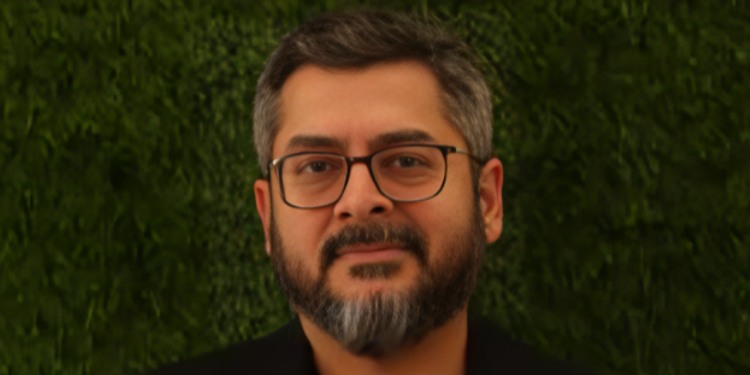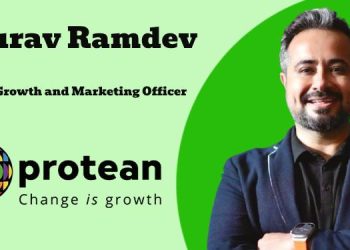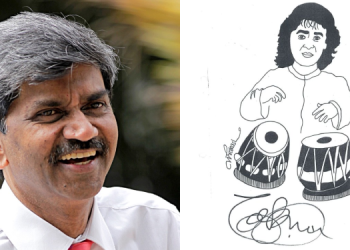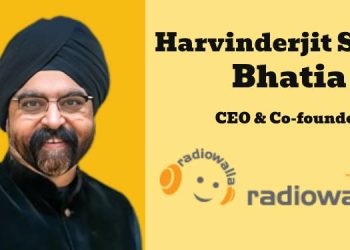Mumbai: AI will not replace humans. You have to play with AI to cope and thrive in uncertainty. For organizations to thrive, there is a harmonious need for connection between humans and technology. Companies and their employees, including marketers, have to wear three hats. The first two are tech enablement and cross-functional collaboration, meaning that one cannot work in silos anymore. It’s impossible.
However, the third hat of culture hacking is the cause of struggle. This is the big challenge for CXOs. Tech is not the cause of struggle; it is the culture issue that is causing a disconnect and why work and play are seen as paradoxical. We need to bring play into our lives, and if we do, brands will benefit enormously. Organizations and marketers must move away from the industrial age mindset to a creative digital age mindset. We need to shift from empathy to compassion, from working in silos to co-creating, from scalable efficiency to sustainable creativity, from reliance on the past to adapting, and from joy in control to harmony in chaos. To achieve this, India needs to stop looking at the West.
Dr. Avinash Jhangiani delivered an address at Smarties Unplugged India, organized by MMA India. The address was titled “Play to Transform: Unleashing Your Inner Child to Build a HumAIn Culture.”
He noted a real need for cultural transformation in an AI-driven future. The shift from working seriously to playing seriously is important. The challenge is that every time we think of work and play, it’s usually in opposite directions. He introduced a concept called serious play.
He also emphasized that clients buy into a marketer’s campaign or product not just because of numbers, but because of the marketer. “It’s about who you are as a person and a leader. What do you represent? Your values and behaviors are what they buy into, whether they know it or not.”
“Today, big data is everywhere. The interesting thing is we have so much data, but we lack intelligent data. Yes, it’s called the new oil, but what are we going to do with it? We need the engine. The engine is your artificial intelligence, your algorithms, and everything else. The challenge for us is to make a mindset shift from logical and rational thinking to bringing creativity and media together. Humans want experiences, and experience is not just a media outcome; it’s a logical, rational, and emotional outcome, which is both creative and media-related. It’s time, finally, after more than 50 years, that we understand we have to think about that harmonious connection. Technology alone will not help us; it’s about bringing us together.
If you ask me, irrespective of your job description, we need to wear three hats. We have to enable technology; we don’t have to know the tech, but we have to creatively apply it to drive outcomes—be it innovation, improving revenues, or reducing costs. Cross-functional collaboration is essential, but I want to spend a moment on culture.
“Culture is the hardest thing to change and adapt to. How much investment, time, and energy is put into culture? Technology is moving faster than we ever imagined. Culture is important because it’s eating into our growth and our ability to execute with speed and agility.
“I believe we don’t necessarily need to upgrade our infrastructure; we need to first upgrade our human software, which is the mindset. Many people express fear about AI replacing jobs. I help them understand that their fear of AI stems from a disconnection with themselves. They see work and play as extremes. While AI is on the rise, it’s essential to remember that AI has been around for the last 25 years.
“The reason we perceive AI as threatening now is its human-like interface. The more we resist AI, the more we find it challenging to adapt.”
Shifting the Mindset: He added that we have to transition from an industrial age mindset to a creative digital age mindset. “What does this mindset entail? The first thing is empathy. We are obsessed with empathy. Open LinkedIn, and you’ll find countless posts on the subject.
“In complex problem-solving, we should put ourselves in the shoes of the person presenting the problem. We think we understand empathy because we had a mother who told us, ‘Now you know how I feel.’ But when applied in the workplace, we must move to compassion. Compassion is a higher energy form of empathy. Empathy is about sharing the same level of energy with that person.
“Compassion is saying, ‘I feel you, I understand you, and I’m willing to act alongside you, but only with your permission, not intrusively.’” The second point he made is that one cannot work in silos. “You have to co-create. A year ago, I used to say, ‘Co-create with humans,’ but now I must say, ‘Co-create with AI as well.’ You don’t have a choice.”
The third point is moving from scalable efficiency to sustainable creativity. “If AI will handle automation and mundane tasks, you must sustain your creative edge. Those who claim to be more analytical than creative may want to rethink that; creativity is the only differentiator. Everything is linked to your curiosity, velocity, and resilience. Creativity isn’t merely about creating something new; it’s about what it takes to become creative.
“It requires you to let your guard down, to be more curious, and to embrace uncertainty. Only then can you think creatively.” He concluded with the importance of dealing with chaos. “After moving to India, I realized that if it’s all about process, standards, and control, thankfully, now a decade later, we understand that even Westerners are seeking unstructured information. Welcome to India, where we know how to deal with chaos. We must stop looking to the West and instead focus on our own DNA. This adaptability is innate in us. No wonder many top global CEOs are Indians today.
“This is not rocket science; it’s in our DNA. We know how to embrace chaos because we believe there’s light at the end of the tunnel. I simply call this the shift from working seriously to playing seriously. What does ‘playing seriously’ entail, and how does it work? We need to bring ‘play seriously’ into our lives. Every time we think of work and play, it’s usually in the opposite direction. I’m here to introduce you to a concept called serious play, which you can apply as a mindset, especially in times of crisis, when dealing with difficult problems, etc.”
Serious Play: He noted that serious play is essential for hacking into company culture, allowing individuals to navigate uncertainty, bureaucracy, and hierarchy.
“It provides autonomy and flexibility that the younger generation demands. It fosters flow, focus, and psychological safety, ensuring individuals can express themselves and make mistakes. Let’s fall fast and forward. In a very serious sense, I conduct many workshops with leaders, including design thinking workshops with organizations and the Indian School of Business.
I employ design thinking plus systems thinking, but I’ve observed that many organizations attempting to implement human-centric design struggle due to the required mindset shifts. After seven to eight years of research, I understand that we must rediscover our inner child, which has been hiding untapped all this time.
“We need to bring out that fearless nature, that opportunity to question and challenge the status quo within ourselves. Through design thinking, we can play to think creatively and constructively. We use our head, heart, and hands to push ourselves.
For leaders, regardless of whether you’re leading one team member or an entire business, focus on six strategic capabilities. You may have heard of these before, but every time I open LinkedIn, I find endless lists of what leaders need to do.
“You don’t need to do everything—just focus on six things. Learn to synchronize the head, heart, and hands. The industrial age emphasized logic, rationality, and ROI business cases.
“When you consider the heart and the hand, you begin to incorporate emotions into your storytelling instead of relying solely on ROI metrics. Clients buy into your campaign, product, or service not just because of the numbers, but because of you. It’s about who you are as a person, a leader. What do you represent? Your values and behaviors are what they buy into, whether they realize it or not. Wearing a suit and tie was suitable for the industrial age.”
Authenticity: He went on to discuss the importance of being genuine. “Today, it’s okay to be yourself. It’s okay to ask for help. Asking for help is brave. Vulnerability is not a weakness; it makes you approachable. It’s about saying, ‘I’m human; please come to me,’ which opens the door to compassion and co-creation for future, creative, and disruptive thinking.
“All these terms we hear are fancy words, but what do they really mean? We struggle with these concepts because of the narratives in our heads, the belief that they are all different. Nobody taught us this in school, even in MBA programs; we were always focused on numbers. Ultimately, 80% of boardrooms consist of people who are #2. It’s time to change that dynamic and bring in those who embody the head, heart, and hand approach. The world we live in today requires us to unleash our inner child.”

















